

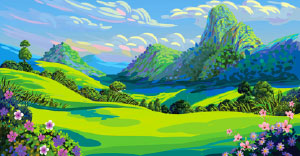
PhET Lab experiments represent real interactive, and research-based simulations of physical phenomena from the PhET™ project at the University of Colorado. For teachers and students around the world, the PhET project provides interactive simulations that are based on extensive education research and support more effective science education. Going beyond traditional educational resources, PhET simulations offer an intuitive, game-like environment where students can learn through scientist-like exploration, where dynamic visual representations make the invisible visible, and where science ideas are connected to real-world phenomena. Unlike some educational software, these simulations are free, easily translated into multiple languages, and available either online or offline. PhET simulations are very flexible tools that can be used in many ways. PhET offers tips for integrating these simulations into your class.
All PhET simulations are available for free from the PhET website. They are written in Java and Flash, and can be run using a standard web browser as long as Flash and Java are installed. The PhET project is hard at work increasing the accessibility of their simulations, and a number of PhET simulations have accessibility features.
There are 25 simulations in the PhET Earth Science Collection. Here are some highlights:
| Online Activity Labs: | Topics: |
|---|---|
Plate Tectonics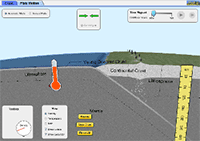 |
Explore how plates move on the surface of the earth. Change temperature, composition, and thickness of plates. Discover how to create new mountains, volcanoes, or oceans! Details and get access to Plate Tectonics Check out Plate Tectonics |
Gravity and Orbits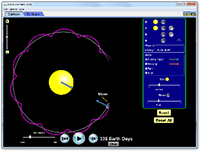 |
Move the sun, earth, moon and space station to see how it affects their gravitational forces and orbital paths. Visualize the sizes and distances between different heavenly bodies, and turn off gravity to see what would happen without it! Details and get access to Gravity and Orbits Check out Gravity and Orbits |
Glaciers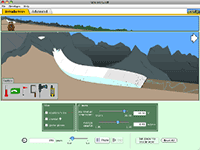 |
Adjust mountain snowfall and temperature to see the glacier grow and shrink. Use scientific tools to measure thickness, velocity and glacial budget. Details and get access to Glaciers Check out Glaciers |
The Greenhouse Effect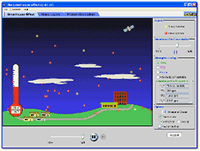 |
How do greenhouse gases affect the climate? Explore the atmosphere during the ice age and today. What happens when you add clouds? Change the greenhouse gas concentration and see how the temperature changes. Then compare to the effect of glass panes. Zoom in and see how light interacts with molecules. Do all atmospheric gases contribute to the greenhouse effect? Details and get access to The Greenhouse Effect Check out The Greenhouse Effect |
Radioactive Dating Game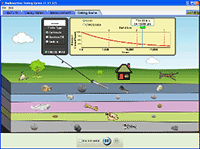 |
Learn about different types of radiometric dating, such as carbon dating. Understand how decay and half life work to enable radiometric dating. Play a game that tests your ability to match the percentage of the dating element that remains to the age of the object. Details and get access to Radioactive Dating Game Check out Radioactive Dating Game |
| Online Activity Labs: | Topics: |
|---|---|
Earthquake Lab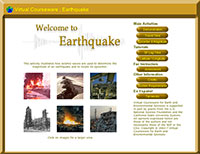 |
Students explore how seismic waves are used to determine the magnitude of an earthquake and to locate its epicenter. Virtual Earthquake is an interactive Web-based activity designed to introduce students to the concepts of how an earthquake EPICENTER is located and how the RICHTER MAGNITUDE of an earthquake is determined. A "Certificate of Completion" will be available to each student at the end of each activity. Details and get access to Earthquake Check out Earthquake |
Virtual Age - Dating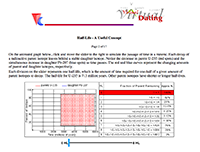 |
This is an interactive exercise about Geologic Time. Students investigate the theory and processes of radiometric age-dating of rocks. Also included is a C-14 age-dating option for once-living materials. This lab can be used to investigate how geologists and archaeologists determine the ages of rocks and ancient artifacts. A "Certificate of Completion" will be available to each student at the end of each activity. Details and get access to Virtual Dating Check out Virtual Dating |
Virtual River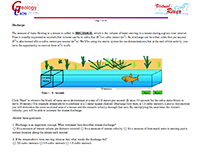 |
Students will find two interactive exercises designed to help you learn about river processes like discharge, flooding, and flood frequency. Each activity requires you to make careful observations and measurements, do simple calculations, and answer questions about your work. A "Certificate of Completion" will be available to each student at the end of each activity. Details and get access to Virtual River Check out Virtual River |
Global Warming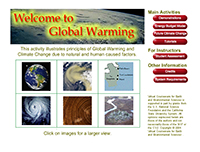 |
Students are immersed in an interactive web-based simulation activity which illustrates the principles of global warming and climate change due to natural and human caused factors. Global Warming explores climate using an Energy Budget Model and predicts Future Climate Change using data in the Special Report on Emissions Scenarios from the Intergovernmental Panel on Climate Change (2001). Details and get access to Global Warming Check out Global Warming |
| Website: | Topics: |
|---|---|
MERLOT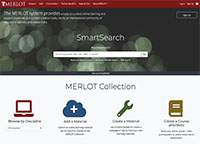 |
| Website: | Topics: |
|---|---|
Open Text BC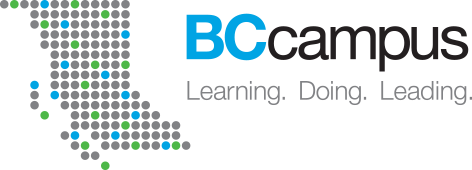 |
The BCcampus Open Education Virtual Lab and Science Resource Directories for Earth Science and Enviornmental Science list free earth science and enviornmental science resources designed to support remote education. |
| Website: | Topics: |
|---|---|
KCVS |
The King's Centre for Visualization in Science offers a listing of sites and a listing of visualizations. The Centre is committed to improving the global public understanding of science through research and the creation and dissemination of peer-reviewed interactive electronic learning tools to see and understand science. |
| Website: | Topics: |
|---|---|
NSDL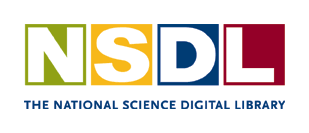 |
The National Science Digital Library - provides high quality online educational resources for teaching and learning, with current emphasis on the sciences, technology, engineering, and mathematics (STEM) disciplines–both formal and informal, institutional and individual, in local, state, national, and international educational settings. The NSDL collection contains structured descriptive information (metadata) about web-based educational resources held on other sites by their providers. These providers have contribute this metadata to NSDL for organized search and open access to educational resources via this website and its services. |
Are you using free Virtual Lab materials you found on the web in your teaching or your learning? Have you posted free Virtual Labs online that are open for others to use? We invite you to catalog these Virtual Labs you use or authored in MERLOT. Your colleagues and students around the world will thank you!
First: Become a member of MERLOT (It will take about 2 minutes and it’s FREE).
Second: Log in to MERLOT and click to Add a Material. (It will take about 4 minutes the first time and step-by-step instructions for contributing materials to MERLOT are available).